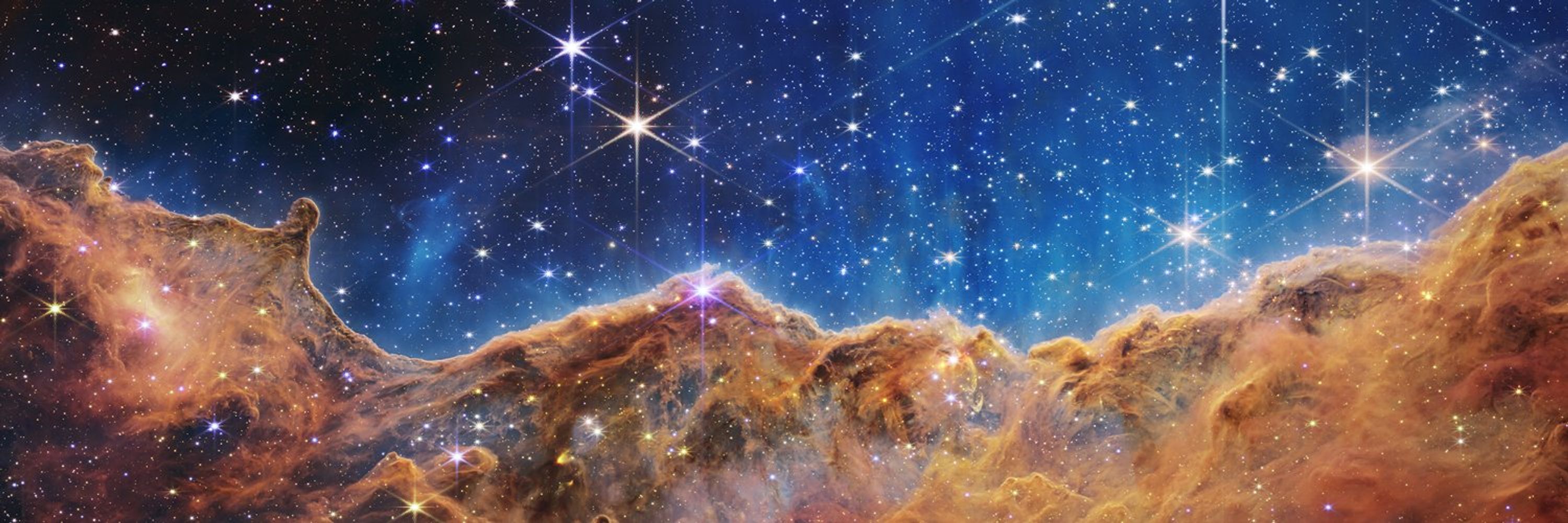
NASA Webb Telescope
@nasawebb.extwitter.link
⚠️ MIRROR OF twitter.com/NASAWebb
⚠️ If you own the original account and want to claim this, please contact @twttr-mirrors.bsky.social
⚠️ If you own the original account and want to claim this, please contact @twttr-mirrors.bsky.social
Nature’s magnifying glass 🔎
Galaxies in these images might look stretched or warped. That’s due to gravitational lensing, a tool that allows us to peer even further into the universe! https://go.nasa.gov/3KLgN9Y https://pbs.twimg.com/media/G2GJ7ibW0AA2ZMm.jpg
Galaxies in these images might look stretched or warped. That’s due to gravitational lensing, a tool that allows us to peer even further into the universe! https://go.nasa.gov/3KLgN9Y https://pbs.twimg.com/media/G2GJ7ibW0AA2ZMm.jpg

October 12, 2025 at 7:57 PM
Nature’s magnifying glass 🔎
Galaxies in these images might look stretched or warped. That’s due to gravitational lensing, a tool that allows us to peer even further into the universe! https://go.nasa.gov/3KLgN9Y https://pbs.twimg.com/media/G2GJ7ibW0AA2ZMm.jpg
Galaxies in these images might look stretched or warped. That’s due to gravitational lensing, a tool that allows us to peer even further into the universe! https://go.nasa.gov/3KLgN9Y https://pbs.twimg.com/media/G2GJ7ibW0AA2ZMm.jpg
Webb took a look at the Sagittarius B2 molecular cloud, the most massive, and active star-forming region in our galaxy, located only a few hundred light years from our central black hole. Why is it so much more active than the rest of the galactic center? https://go.nasa.gov/46lurcz https://pbs.twim

September 24, 2025 at 2:32 PM
Webb took a look at the Sagittarius B2 molecular cloud, the most massive, and active star-forming region in our galaxy, located only a few hundred light years from our central black hole. Why is it so much more active than the rest of the galactic center? https://go.nasa.gov/46lurcz https://pbs.twim
The 1st exoplanet was found just a few decades ago; now we know they are the rule, not the exception. Celebrate the 6000th confirmed exoplanet, with @NASAJPL's Dr. Eric Mamajek and the Small Steps, Giant Leaps podcast. https://go.nasa.gov/3W1vQPj https://pbs.twimg.com/media/G1eLCs7WcAEoWCG.jpg

September 22, 2025 at 6:49 PM
The 1st exoplanet was found just a few decades ago; now we know they are the rule, not the exception. Celebrate the 6000th confirmed exoplanet, with @NASAJPL's Dr. Eric Mamajek and the Small Steps, Giant Leaps podcast. https://go.nasa.gov/3W1vQPj https://pbs.twimg.com/media/G1eLCs7WcAEoWCG.jpg
Are we alone in the universe?
With Webb’s unprecedented infrared sensitivity, we can detect exoplanet atmospheres and study their chemical compositions in an attempt to answer that question.
But what would it take to be able to say that we found life? We asked a NASA scientist.
With Webb’s unprecedented infrared sensitivity, we can detect exoplanet atmospheres and study their chemical compositions in an attempt to answer that question.
But what would it take to be able to say that we found life? We asked a NASA scientist.
September 18, 2025 at 9:52 PM
Are we alone in the universe?
With Webb’s unprecedented infrared sensitivity, we can detect exoplanet atmospheres and study their chemical compositions in an attempt to answer that question.
But what would it take to be able to say that we found life? We asked a NASA scientist.
With Webb’s unprecedented infrared sensitivity, we can detect exoplanet atmospheres and study their chemical compositions in an attempt to answer that question.
But what would it take to be able to say that we found life? We asked a NASA scientist.
Webb is solving mysteries it created. Remember “little red dots?” They seemed too big to exist in the early universe... and maybe theory couldn’t account for them. It turns out they may be a new class of galaxy containing growing supermassive black holes. https://t.co/OXo6TzNgus https://t.co/Y
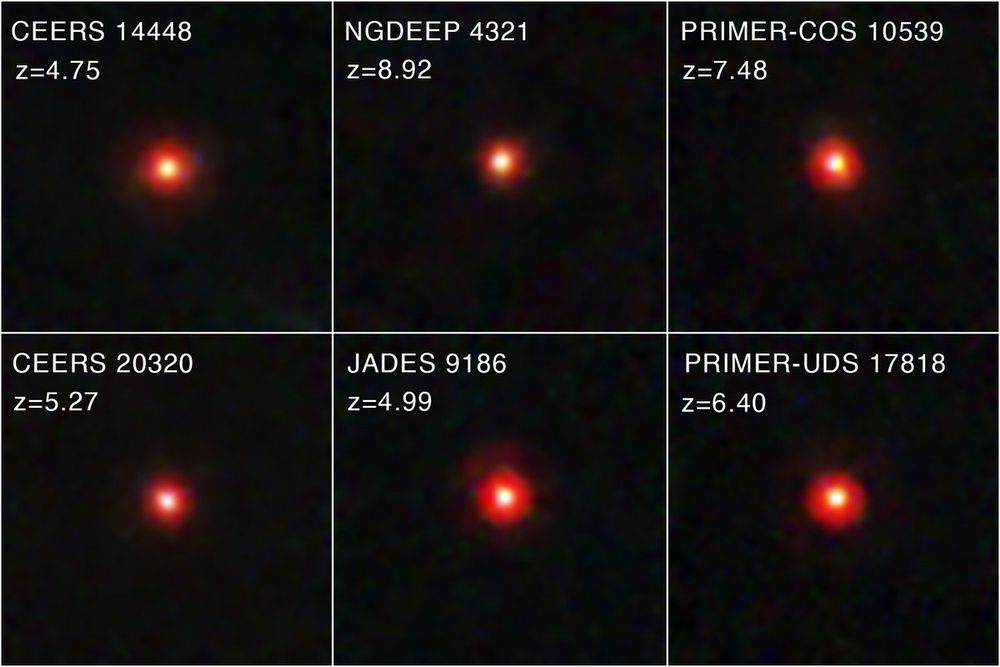
January 14, 2025 at 9:18 PM
Webb is solving mysteries it created. Remember “little red dots?” They seemed too big to exist in the early universe... and maybe theory couldn’t account for them. It turns out they may be a new class of galaxy containing growing supermassive black holes. https://t.co/OXo6TzNgus https://t.co/Y
Like images of broken light, Webb captured these carbon-rich dust shells around a binary star system. Drifting swiftly outwards, they are seeding their surroundings with carbon - one way elements spread across the universe. https://t.co/gjfLhdaP1x https://t.co/rbFjcpKjgm
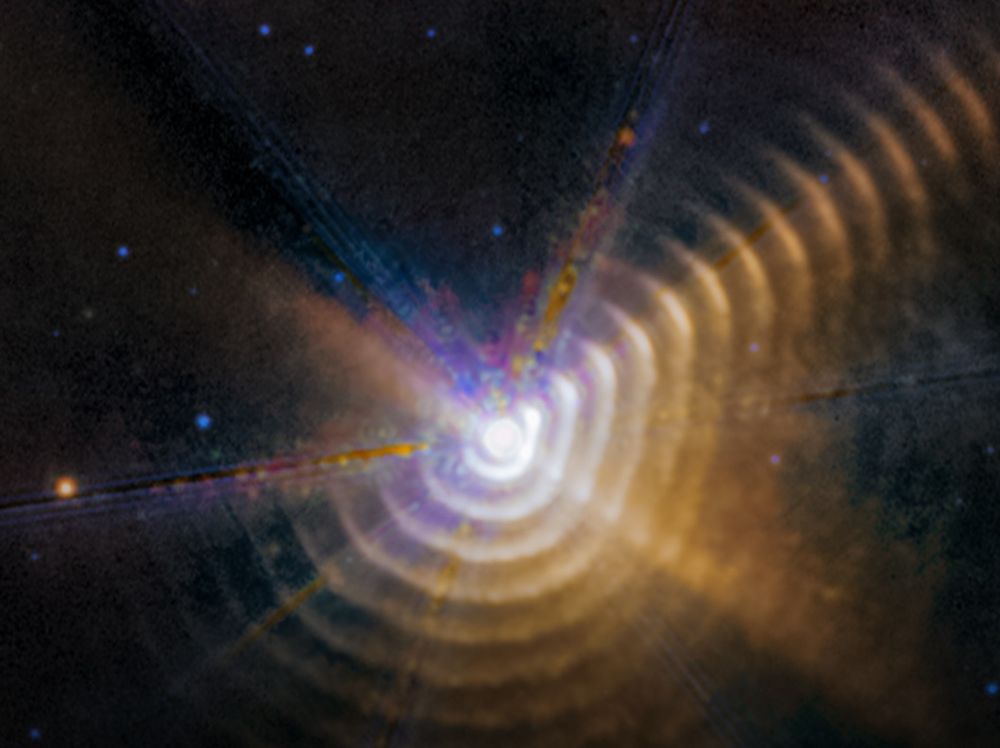
January 14, 2025 at 9:17 PM
Like images of broken light, Webb captured these carbon-rich dust shells around a binary star system. Drifting swiftly outwards, they are seeding their surroundings with carbon - one way elements spread across the universe. https://t.co/gjfLhdaP1x https://t.co/rbFjcpKjgm
A riddle wrapped in a 20-year-old @nasahubble mystery…
Webb confirmed a controversial finding of Hubble’s - planet-forming disks in the early universe that are longer-lived than they should be, given the conditions in their environment. Read more: https://t.co/NVsUmuHmlf https://t.co/PYms9yaWEX
Webb confirmed a controversial finding of Hubble’s - planet-forming disks in the early universe that are longer-lived than they should be, given the conditions in their environment. Read more: https://t.co/NVsUmuHmlf https://t.co/PYms9yaWEX
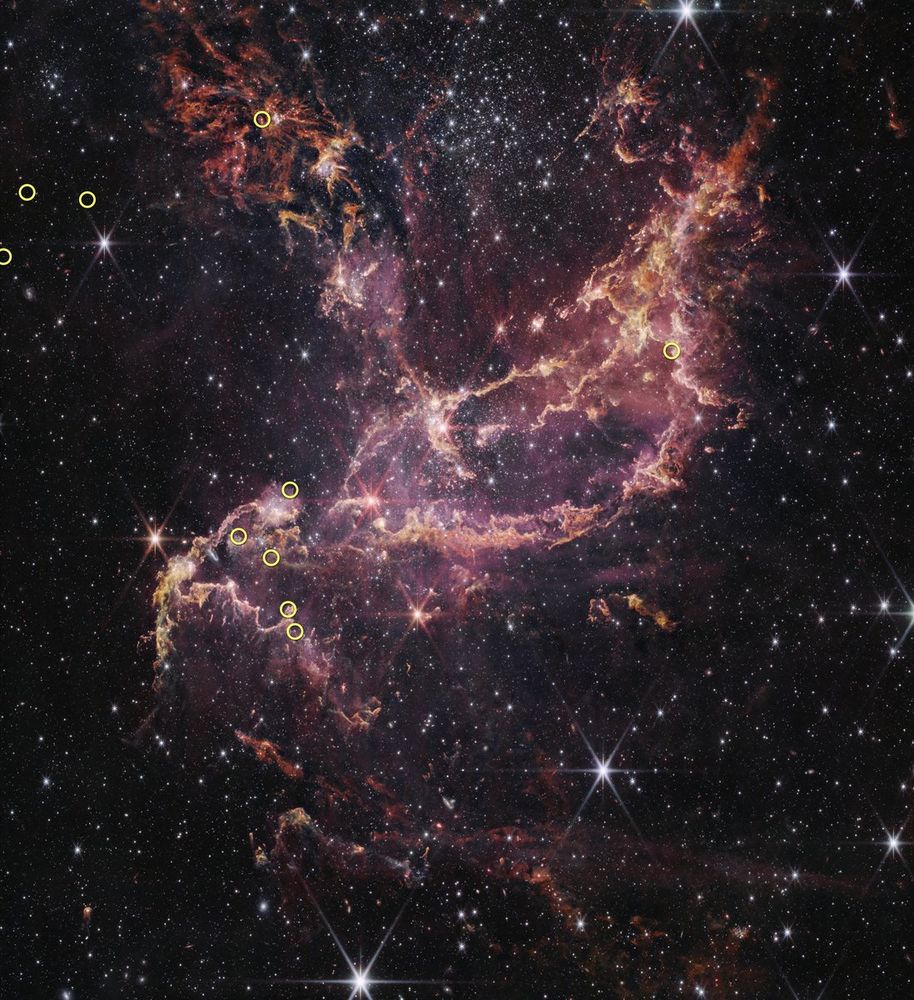
December 16, 2024 at 3:27 PM
A riddle wrapped in a 20-year-old @nasahubble mystery…
Webb confirmed a controversial finding of Hubble’s - planet-forming disks in the early universe that are longer-lived than they should be, given the conditions in their environment. Read more: https://t.co/NVsUmuHmlf https://t.co/PYms9yaWEX
Webb confirmed a controversial finding of Hubble’s - planet-forming disks in the early universe that are longer-lived than they should be, given the conditions in their environment. Read more: https://t.co/NVsUmuHmlf https://t.co/PYms9yaWEX
It's that time of year, let's make some snowflakes! ❄️
Fold and cut your own using our Webb template: https://t.co/ET8aN3vBO8 https://t.co/gJcUNdccKF
Fold and cut your own using our Webb template: https://t.co/ET8aN3vBO8 https://t.co/gJcUNdccKF

December 12, 2024 at 9:17 PM
It's that time of year, let's make some snowflakes! ❄️
Fold and cut your own using our Webb template: https://t.co/ET8aN3vBO8 https://t.co/gJcUNdccKF
Fold and cut your own using our Webb template: https://t.co/ET8aN3vBO8 https://t.co/gJcUNdccKF
Someone struck a match against the night…
Webb discerned distinct star clusters in the Firefly Sparkle galaxy, which existed 600 million years after the big bang - the first discovery of an actively forming galaxy as lightweight as the young Milky Way. https://t.co/cJenCOWLsc https://t.co/BWCarE
Webb discerned distinct star clusters in the Firefly Sparkle galaxy, which existed 600 million years after the big bang - the first discovery of an actively forming galaxy as lightweight as the young Milky Way. https://t.co/cJenCOWLsc https://t.co/BWCarE
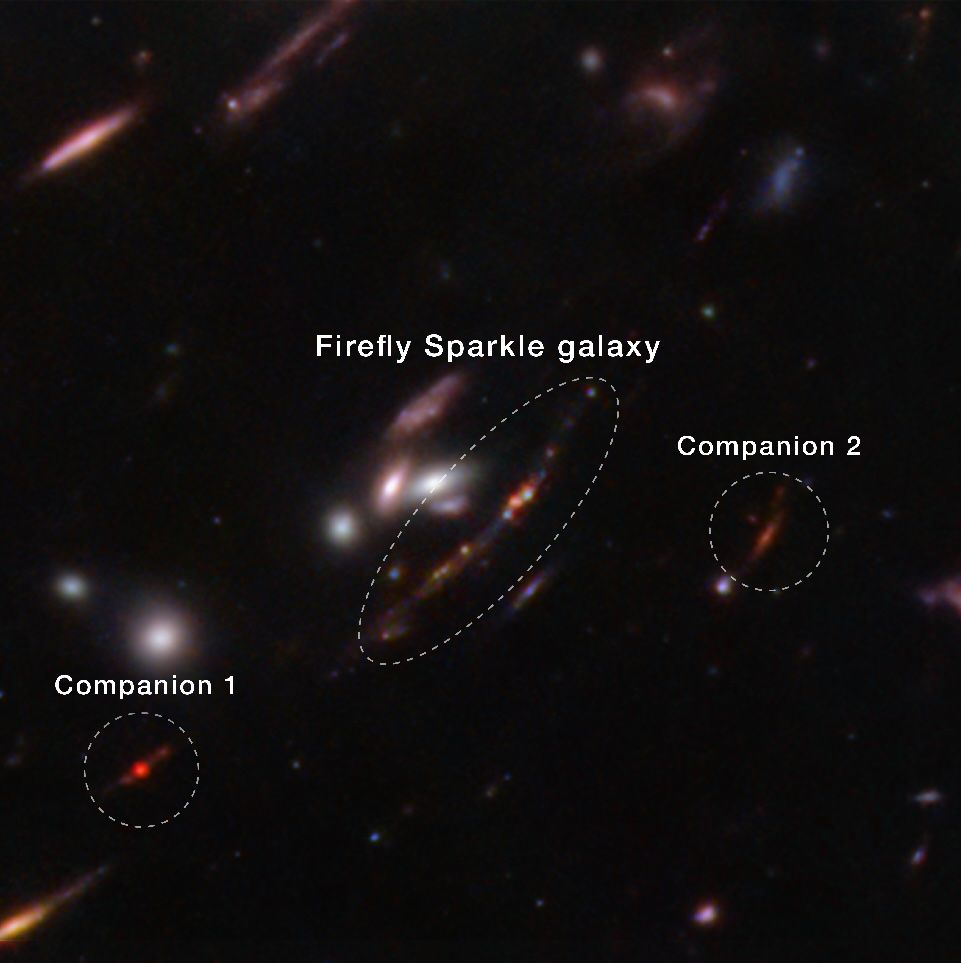
December 11, 2024 at 4:35 PM
Someone struck a match against the night…
Webb discerned distinct star clusters in the Firefly Sparkle galaxy, which existed 600 million years after the big bang - the first discovery of an actively forming galaxy as lightweight as the young Milky Way. https://t.co/cJenCOWLsc https://t.co/BWCarE
Webb discerned distinct star clusters in the Firefly Sparkle galaxy, which existed 600 million years after the big bang - the first discovery of an actively forming galaxy as lightweight as the young Milky Way. https://t.co/cJenCOWLsc https://t.co/BWCarE
Webb and the Spiderweb protocluster? Let’s get stuck in! 👇
What is it? A galaxy cluster in formation, 10 billion light years away, composed of more than 100 known galaxies. Webb has found some new ones! https://t.co/LA0d0hVw3t https://t.co/gan8TOrP3Y
What is it? A galaxy cluster in formation, 10 billion light years away, composed of more than 100 known galaxies. Webb has found some new ones! https://t.co/LA0d0hVw3t https://t.co/gan8TOrP3Y

December 4, 2024 at 3:58 PM
Webb and the Spiderweb protocluster? Let’s get stuck in! 👇
What is it? A galaxy cluster in formation, 10 billion light years away, composed of more than 100 known galaxies. Webb has found some new ones! https://t.co/LA0d0hVw3t https://t.co/gan8TOrP3Y
What is it? A galaxy cluster in formation, 10 billion light years away, composed of more than 100 known galaxies. Webb has found some new ones! https://t.co/LA0d0hVw3t https://t.co/gan8TOrP3Y
Pardon our dust!
Webb’s near and mid-infrared view of spiral galaxy NGC 2090 highlights its two winding arms as well as the beautiful details of its swirls of dust and gas. https://t.co/5GHzbWezoX https://t.co/KNzLUvjmbk
Webb’s near and mid-infrared view of spiral galaxy NGC 2090 highlights its two winding arms as well as the beautiful details of its swirls of dust and gas. https://t.co/5GHzbWezoX https://t.co/KNzLUvjmbk
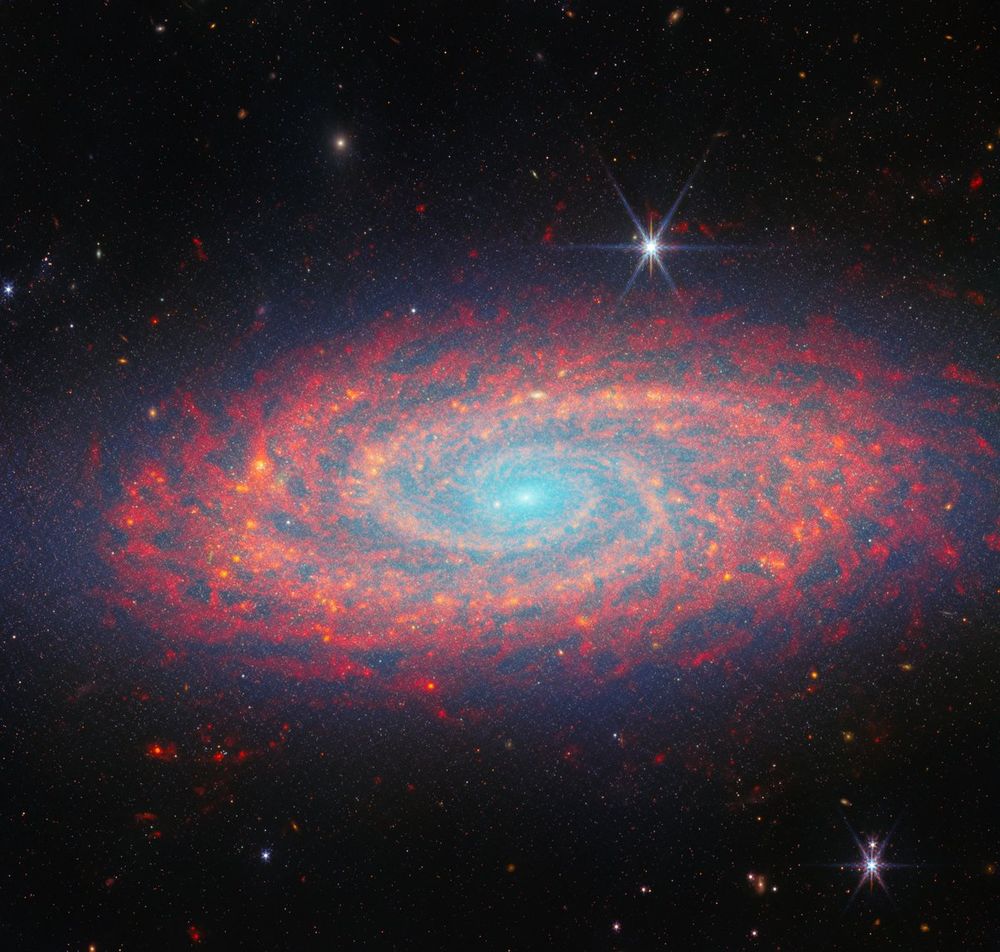
November 27, 2024 at 3:16 PM
Pardon our dust!
Webb’s near and mid-infrared view of spiral galaxy NGC 2090 highlights its two winding arms as well as the beautiful details of its swirls of dust and gas. https://t.co/5GHzbWezoX https://t.co/KNzLUvjmbk
Webb’s near and mid-infrared view of spiral galaxy NGC 2090 highlights its two winding arms as well as the beautiful details of its swirls of dust and gas. https://t.co/5GHzbWezoX https://t.co/KNzLUvjmbk
Ring around the galaxy… Here’s Webb’s stunning new mid-infrared image of M104.
This bright core of the galaxy is dim in this view, revealing a smooth inner disk as well as details of how the clumpy gas in the outer ring is distributed. https://t.co/wQSE9xGTXX https://t.co/p7zNl4YSwD
This bright core of the galaxy is dim in this view, revealing a smooth inner disk as well as details of how the clumpy gas in the outer ring is distributed. https://t.co/wQSE9xGTXX https://t.co/p7zNl4YSwD
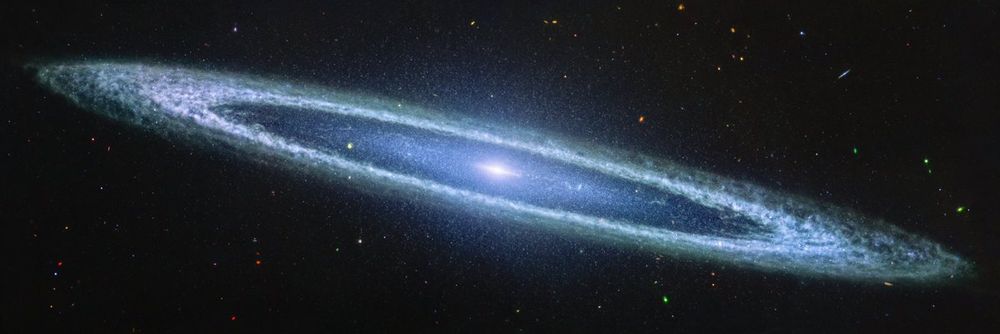
November 25, 2024 at 4:10 PM
Ring around the galaxy… Here’s Webb’s stunning new mid-infrared image of M104.
This bright core of the galaxy is dim in this view, revealing a smooth inner disk as well as details of how the clumpy gas in the outer ring is distributed. https://t.co/wQSE9xGTXX https://t.co/p7zNl4YSwD
This bright core of the galaxy is dim in this view, revealing a smooth inner disk as well as details of how the clumpy gas in the outer ring is distributed. https://t.co/wQSE9xGTXX https://t.co/p7zNl4YSwD
Webb has its eye on Titan, a moon of Saturn, a place where methane and ethane make up its liquid rivers and seas. Learn more about future Titan studies in Other Worlds Episode 3.
NASA+: https://t.co/HDn825EwWE
Youtube: https://t.co/CzJyKV0ZFA
NASA+: https://t.co/HDn825EwWE
Youtube: https://t.co/CzJyKV0ZFA
November 12, 2024 at 3:03 PM
Webb has its eye on Titan, a moon of Saturn, a place where methane and ethane make up its liquid rivers and seas. Learn more about future Titan studies in Other Worlds Episode 3.
NASA+: https://t.co/HDn825EwWE
Youtube: https://t.co/CzJyKV0ZFA
NASA+: https://t.co/HDn825EwWE
Youtube: https://t.co/CzJyKV0ZFA
Take a deep dive into how our optics team keeps Webb’s mirrors in top performance shape, enabling it to continue seeing the universe in unprecedented detail. (Hint: by making small adjustments to the mirror segments as shown here.) https://t.co/d2HrQRA4Ct https://t.co/md5DPKibHI
November 8, 2024 at 4:24 PM
Take a deep dive into how our optics team keeps Webb’s mirrors in top performance shape, enabling it to continue seeing the universe in unprecedented detail. (Hint: by making small adjustments to the mirror segments as shown here.) https://t.co/d2HrQRA4Ct https://t.co/md5DPKibHI
It’s giving rainbows and unicorns, like a middle school binder 🦄🌈
Meet NGC 602, a young star cluster in the Small Magellanic Cloud, where astronomers using @NASAWebb have found candidates for the first brown dwarfs outside of our galaxy. https://t.co/jdupXcWiAH https://t.co/v4FBxAzulj
Meet NGC 602, a young star cluster in the Small Magellanic Cloud, where astronomers using @NASAWebb have found candidates for the first brown dwarfs outside of our galaxy. https://t.co/jdupXcWiAH https://t.co/v4FBxAzulj
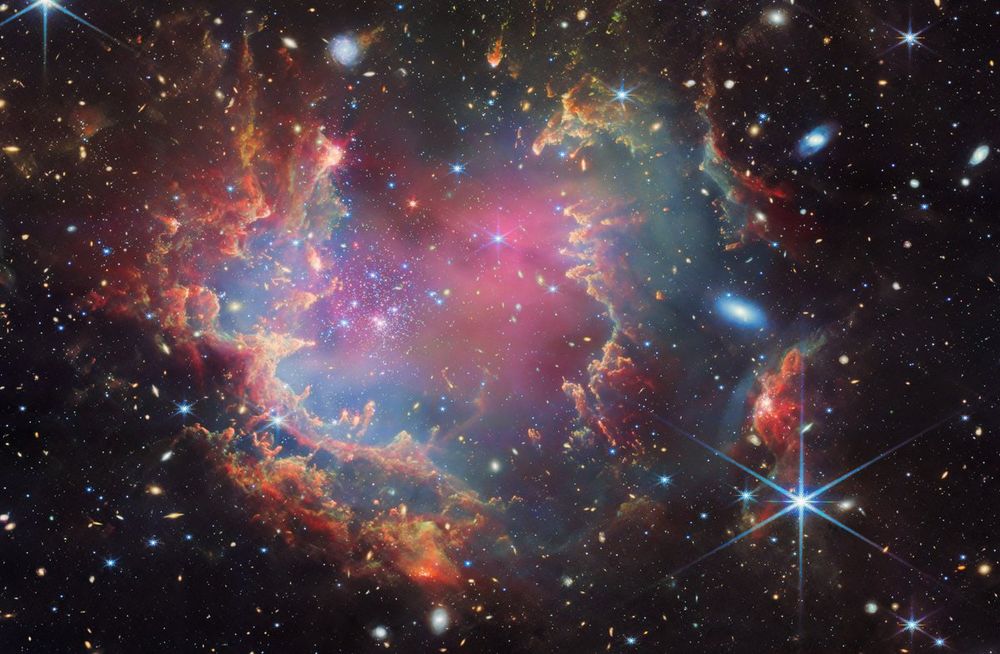
October 23, 2024 at 5:38 PM
It’s giving rainbows and unicorns, like a middle school binder 🦄🌈
Meet NGC 602, a young star cluster in the Small Magellanic Cloud, where astronomers using @NASAWebb have found candidates for the first brown dwarfs outside of our galaxy. https://t.co/jdupXcWiAH https://t.co/v4FBxAzulj
Meet NGC 602, a young star cluster in the Small Magellanic Cloud, where astronomers using @NASAWebb have found candidates for the first brown dwarfs outside of our galaxy. https://t.co/jdupXcWiAH https://t.co/v4FBxAzulj
Shopping for pumpkins this weekend? Consider carving your own James Webb Space Pumpkin! We have five Webb-related designs, with differing degrees of difficulty. If you make a Webb-related pumpkin, be sure to tag us so we can share! https://t.co/VYvv5bJgXh https://t.co/tL5Yd839Vm
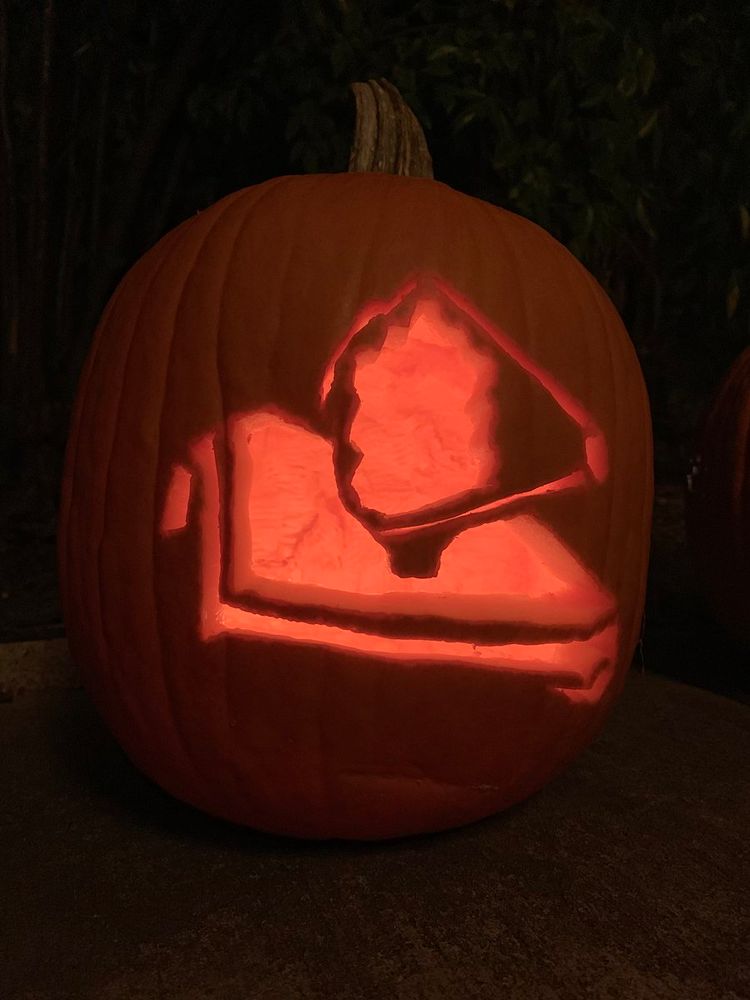
October 18, 2024 at 8:25 PM
Shopping for pumpkins this weekend? Consider carving your own James Webb Space Pumpkin! We have five Webb-related designs, with differing degrees of difficulty. If you make a Webb-related pumpkin, be sure to tag us so we can share! https://t.co/VYvv5bJgXh https://t.co/tL5Yd839Vm
Congrats to the whole @EuropaClipper team on a successful launch! We'll wave as you fly by on the way out to your planetary front row seat. We're so happy and not at all jealous 😜
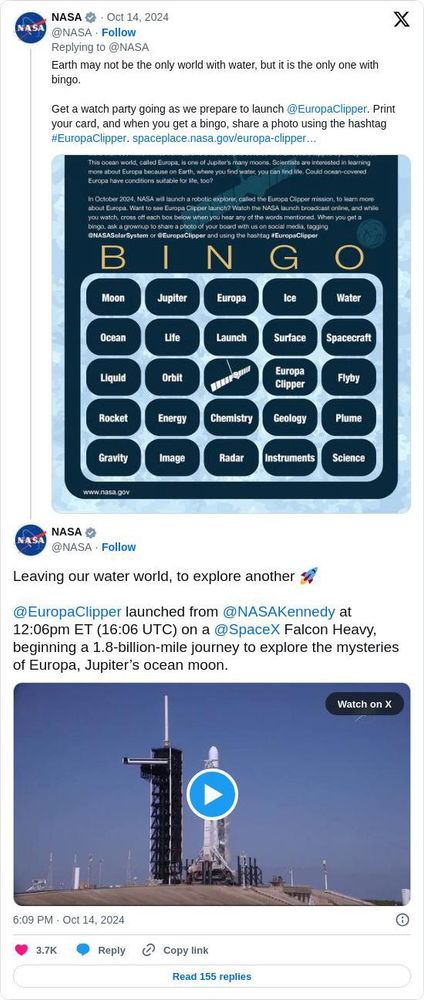
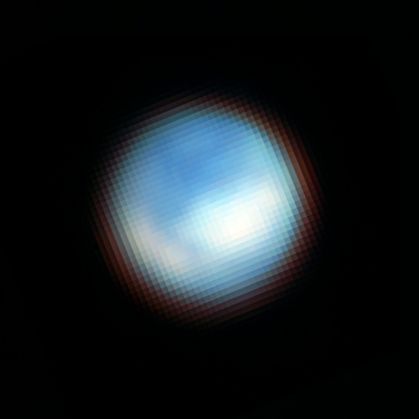
October 15, 2024 at 7:38 PM
Congrats to the whole @EuropaClipper team on a successful launch! We'll wave as you fly by on the way out to your planetary front row seat. We're so happy and not at all jealous 😜
Imagine a sky full of hundreds of stars as bright as the full moon… If our solar system were a part of this “super star” cluster, that is what we might experience. Here is Webb’s look at Westerlund 1, one of the closest clusters of its kind. https://t.co/LyphCSpnwh https://t.co/kGFdvo2MLV

October 4, 2024 at 6:42 PM
Imagine a sky full of hundreds of stars as bright as the full moon… If our solar system were a part of this “super star” cluster, that is what we might experience. Here is Webb’s look at Westerlund 1, one of the closest clusters of its kind. https://t.co/LyphCSpnwh https://t.co/kGFdvo2MLV
Chris Gunn's photography on Webb was stellar! ✨
Check out some of our fav Chris Gunn photos of Webb's journey to space here: https://t.co/8h4g2ydjWE
Check out some of our fav Chris Gunn photos of Webb's journey to space here: https://t.co/8h4g2ydjWE

October 3, 2024 at 3:54 PM
Chris Gunn's photography on Webb was stellar! ✨
Check out some of our fav Chris Gunn photos of Webb's journey to space here: https://t.co/8h4g2ydjWE
Check out some of our fav Chris Gunn photos of Webb's journey to space here: https://t.co/8h4g2ydjWE
Centaurs are objects in orbital flux: small and icy, pushed inward of Neptune by its gravity, not quite comets...yet. Webb mapped gases spewing from Centaur 29P in high detail, providing new insights into the formation and evolution of the solar system. https://t.co/iQovSOJLkp https://t.co/96nOOlnp8

October 2, 2024 at 2:08 PM
Centaurs are objects in orbital flux: small and icy, pushed inward of Neptune by its gravity, not quite comets...yet. Webb mapped gases spewing from Centaur 29P in high detail, providing new insights into the formation and evolution of the solar system. https://t.co/iQovSOJLkp https://t.co/96nOOlnp8
A New H0pe?
Scientists are using Webb to measure the expansion of the universe, by pointing it at a gravitationally lensed supernova, SN H0pe. The light from this exploding star has been bent and magnified by a galaxy cluster between it and us. https://t.co/QGLdzBmeDY https://t.co/Nbd3OdhOmU
Scientists are using Webb to measure the expansion of the universe, by pointing it at a gravitationally lensed supernova, SN H0pe. The light from this exploding star has been bent and magnified by a galaxy cluster between it and us. https://t.co/QGLdzBmeDY https://t.co/Nbd3OdhOmU
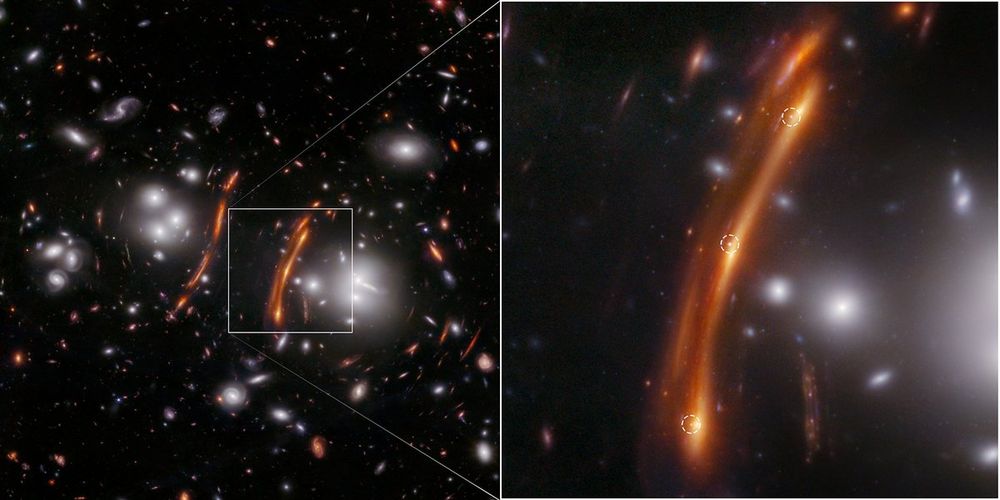
October 1, 2024 at 3:18 PM
A New H0pe?
Scientists are using Webb to measure the expansion of the universe, by pointing it at a gravitationally lensed supernova, SN H0pe. The light from this exploding star has been bent and magnified by a galaxy cluster between it and us. https://t.co/QGLdzBmeDY https://t.co/Nbd3OdhOmU
Scientists are using Webb to measure the expansion of the universe, by pointing it at a gravitationally lensed supernova, SN H0pe. The light from this exploding star has been bent and magnified by a galaxy cluster between it and us. https://t.co/QGLdzBmeDY https://t.co/Nbd3OdhOmU
Also, within those 1000 days, we launched Webb, commissioned it, and saw it safely to its home at the second Lagrange point! 🚀
September 20, 2024 at 7:22 PM
Also, within those 1000 days, we launched Webb, commissioned it, and saw it safely to its home at the second Lagrange point! 🚀
Today is Webb’s 1000th day in space! 🎉
Our #UnfoldTheUniverse "Lifer" checklist:
A spacecraft impacting an asteroid
Unexpected dust (supernova remnants and early galaxies)
Exoplanets atmospheres
Early black holes
The farthest galaxy (so far!)
What's your fav discovery?
Our #UnfoldTheUniverse "Lifer" checklist:
A spacecraft impacting an asteroid
Unexpected dust (supernova remnants and early galaxies)
Exoplanets atmospheres
Early black holes
The farthest galaxy (so far!)
What's your fav discovery?
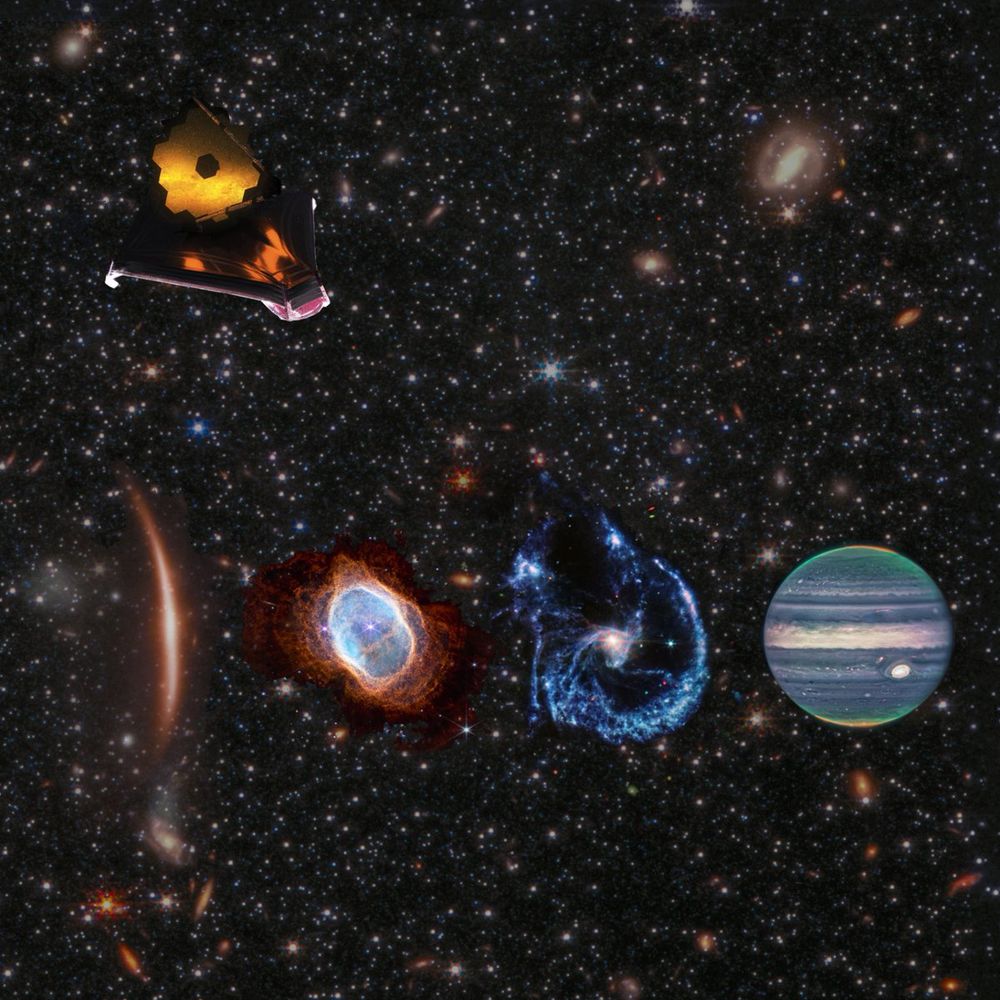
September 20, 2024 at 6:44 PM
Today is Webb’s 1000th day in space! 🎉
Our #UnfoldTheUniverse "Lifer" checklist:
A spacecraft impacting an asteroid
Unexpected dust (supernova remnants and early galaxies)
Exoplanets atmospheres
Early black holes
The farthest galaxy (so far!)
What's your fav discovery?
Our #UnfoldTheUniverse "Lifer" checklist:
A spacecraft impacting an asteroid
Unexpected dust (supernova remnants and early galaxies)
Exoplanets atmospheres
Early black holes
The farthest galaxy (so far!)
What's your fav discovery?
Other observatories have captured this galaxy pair. Left: a visible-light beauty shot by @NASAHubble. Right: Infrared Spitzer showcases the difference in ages of the stars in these galaxies. Older stars are in blue (3.6 microns) and clumps of young stars in pink (8 microns).
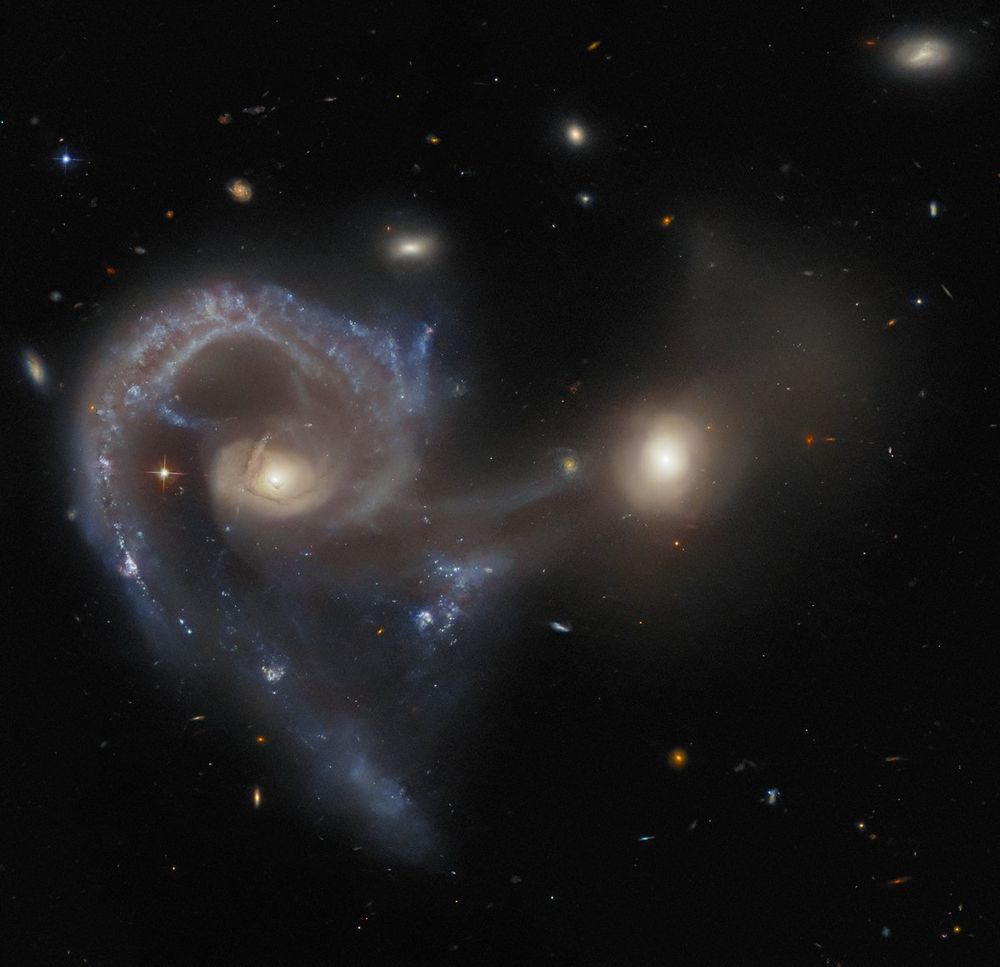
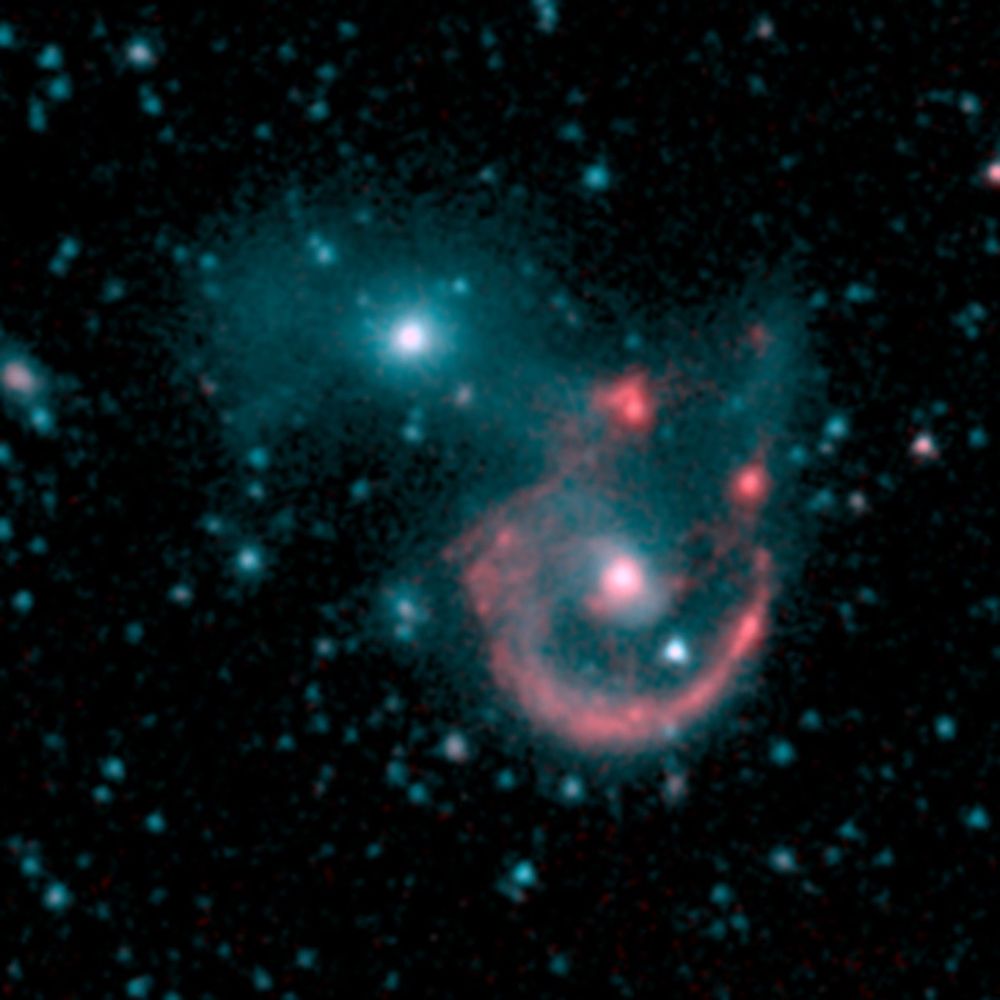
September 18, 2024 at 2:04 PM
Other observatories have captured this galaxy pair. Left: a visible-light beauty shot by @NASAHubble. Right: Infrared Spitzer showcases the difference in ages of the stars in these galaxies. Older stars are in blue (3.6 microns) and clumps of young stars in pink (8 microns).
Webb’s mid-infrared observations show star-forming regions and dust, as well as the large spiral galaxy’s bright nucleus. Near-infrared data (this image) highlights the stars within the colliding galaxies, as well as the translucent bridge of stars being pulled from them both.

September 18, 2024 at 2:04 PM
Webb’s mid-infrared observations show star-forming regions and dust, as well as the large spiral galaxy’s bright nucleus. Near-infrared data (this image) highlights the stars within the colliding galaxies, as well as the translucent bridge of stars being pulled from them both.

